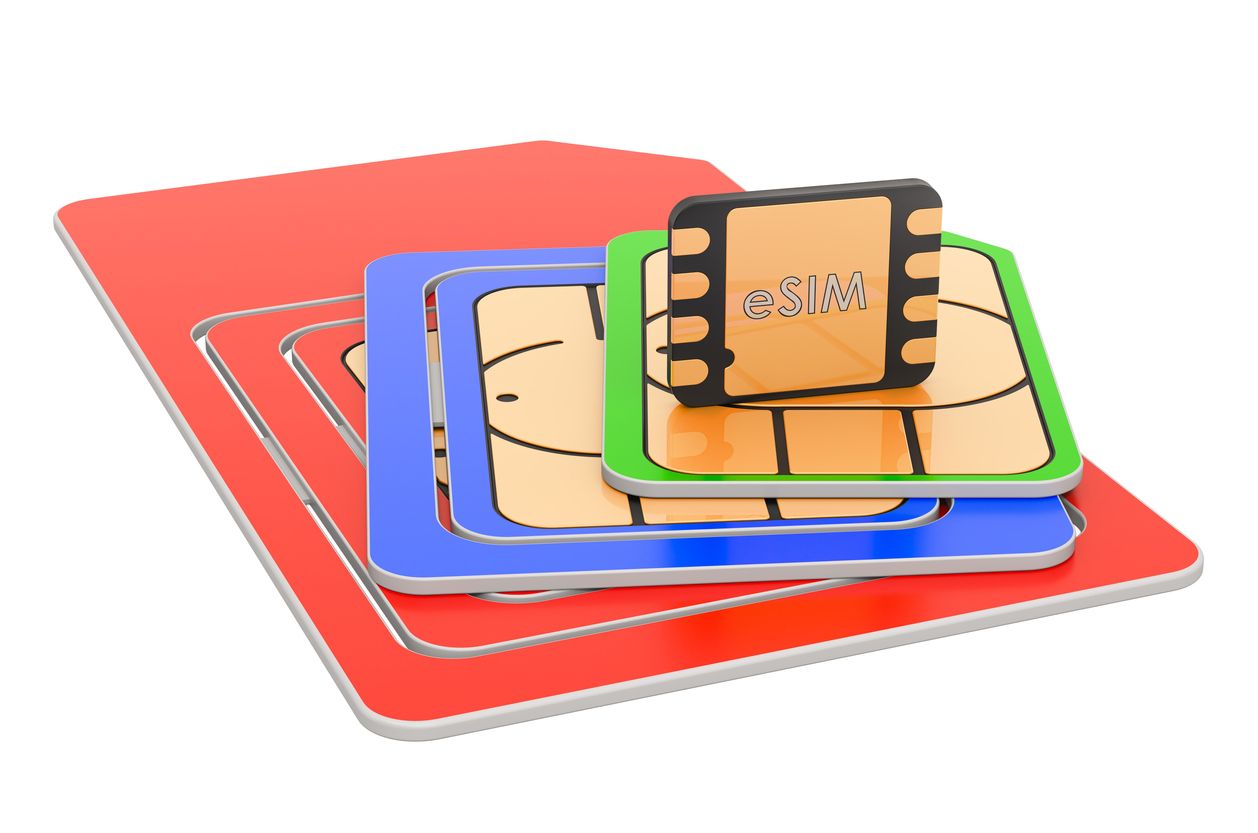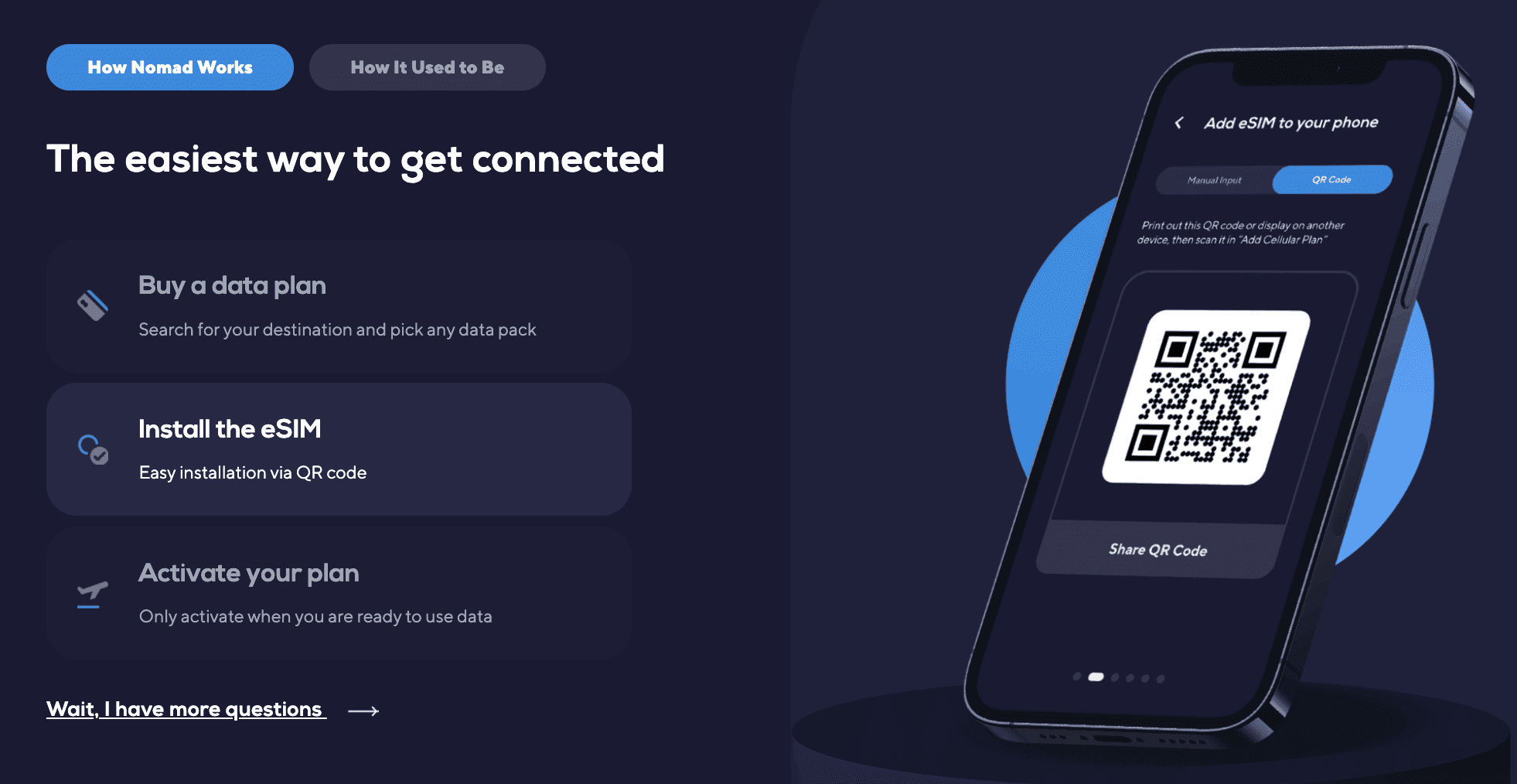eSIM
eSIMs 101: Installation und Aktivierung
Bedeutet die Installation einer eSIM, dass diese aktiviert ist?
Wenn Sie zum ersten Mal eine eSIM verwenden – oder beabsichtigen, eine zu verwenden –, fragen Sie sich vielleicht, was Sie tun müssen, damit die eSIM funktioniert. In den vielen Artikeln, die Sie lesen, oder in den Einrichtungsanweisungen, die Sie von Ihrem eSIM-Anbieter erhalten, sind Ihnen möglicherweise häufig die Begriffe „Installation“ und „Aktivierung“ aufgefallen. In diesem Artikel werden wir untersuchen, was es bedeutet, Ihre eSIM zu installieren und zu aktivieren.
Was ist eSIM?
Im heutigen digitalen Zeitalter entwickelt sich die Technologie ständig weiter, um unser Leben bequemer zu machen. Eine solche Innovation ist die eSIM oder eingebettete SIM. Diese revolutionäre digitale SIM-Karte ist direkt in ein Gerät eingebaut, sodass kein physischer Austausch mehr erforderlich ist und der Wechsel zwischen verschiedenen Mobilfunknetzen einfacher denn je ist.
Einfach ausgedrückt ist eine eSIM ein kleiner Chip, der in ein Gerät wie ein Smartphone oder eine Smartwatch eingebettet ist. Dieser Chip erfüllt denselben Zweck wie eine herkömmliche physische SIM-Karte, allerdings ohne dass eine physische Karte erforderlich ist. Stattdessen ist die eSIM mit allen notwendigen Informationen programmiert, um eine Verbindung zu einem bestimmten Mobilfunknetz herzustellen.

Wie funktioniert eine eSIM?
Eine eSIM funktioniert, indem mehrere Mobilfunknetzprofile im Gerät selbst gespeichert werden. Diese Profile enthalten alle notwendigen Informationen, wie z. B. die Authentifizierungsdetails und Verschlüsselungsschlüssel des Netzwerks, um eine Verbindung mit einem bestimmten Mobilfunknetz herzustellen. Diese Informationen sind erforderlich, um Ihr eSIM-Profil zu authentifizieren und eine Verbindung herzustellen.
Wenn Sie mehrere Profile speichern, können Sie mit nur wenigen Fingertipps auf Ihrem Gerät ganz einfach zwischen Netzwerken wechseln, ohne die SIM-Karte physisch wechseln zu müssen. Die eSIM-Technologie ermöglicht einen nahtlosen Wechsel zwischen verschiedenen Netzwerken und ist daher praktisch für Reisende oder Personen, die häufig zwischen Netzwerken wechseln.
Installieren einer eSIM
Sie fragen sich vielleicht: Wenn in einem Gerät bereits eine eSIM integriert ist, warum müssen Sie dann eine „eSIM installieren“?
Anders als bei einer physischen SIM-Karte bezieht sich „Installieren einer eSIM“ nicht auf den physischen Vorgang, die eSIM in Ihr Gerät einzulegen. Vielmehr geht es darum, Ihr eSIM-Profil zu Ihrem Gerät hinzuzufügen. Sie können es sich wie das Installieren einer Software auf Ihrem Telefon vorstellen. Diese Software enthält die notwendigen Informationen, die eine eSIM zum Aufbau eines Mobilfunknetzes benötigt.

Wie installiere ich eSIM?
Obwohl die genauen SchritteInstallieren einer eSIMkann von Gerät zu Gerät leicht unterschiedlich sein, im Allgemeinen handelt es sich jedoch um einen unkomplizierten Vorgang, der in wenigen Schritten abgeschlossen werden kann.
Ihr Anbieter stellt Ihnen normalerweise einen QR-Code zur Verfügung. Scannen Sie einfach den QR-Code auf der Einstellungsseite Ihres Geräts (oder am Einstiegspunkt für die eSIM-Installation) (oder laden Sie ihn aus Ihrer Fotogalerie, wenn Ihr Gerät dies zulässt), und die erforderlichen Informationen werden heruntergeladen und auf Ihrem Gerät installiert. Alternativ können Sie auch eine manuelle Installation durchführen, indem Sie die Details des eSIM-Profils eingeben (das Ihnen von Ihrem Netzbetreiber zur Verfügung gestellt wurde).
Aktivieren einer eSIM
Nachdem Sie Ihre eSIM installiert haben, müssen Sie sie auch aktivieren, damit sie funktioniert. Während sich die Installation auf das Einrichten Ihres eSIM-Profils auf Ihrem Gerät bezieht, umfasst die Aktivierung die tatsächliche Verbindung zum Mobilfunknetz und die Überprüfung Ihrer Kontodaten, um die volle Funktionalität zu ermöglichen.
Wie aktiviere ich eine eSIM?
Bei einer physischen SIM-Karte erfolgt die Aktivierung normalerweise bei der Ausgabe der SIM-Karte, zu einem von Ihrem Anbieter festgelegten Zeitpunkt oder in manchen Fällen, wenn Ihr Gerät mit der SIM-Karte zum ersten Mal mit dem Netzwerk verbunden wird. All dies geschieht im Hintergrund und ist für Sie nicht sichtbar.
Bei eSIMs gibt es eigentlich keinen großen Unterschied. Die Aktivierung Ihres eSIM-Profils erfolgt durch den Netzbetreiber aus der Ferne. Während die Aktivierung einer eSIM durch dieselben Bedingungen wie bei einer physischen SIM ausgelöst werden kann, verlangen einige Netzbetreiber möglicherweise, dass Sie einen Aktivierungscode eingeben oder eine Aktivierungsanforderung auslösen.

Bedeutet die Installation einer eSIM eine automatische Aktivierung?
Nein, das ist nicht der Fall.
Wie bereits erwähnt, handelt es sich bei der Installation eines eSIM-Profils lediglich um die Bereitstellung der erforderlichen Informationen für das eSIM-Profil. Die Aktivierung des eSIM-Profils ist erforderlich, damit das eSIM-Profil wie vorgesehen funktioniert.
Es ist durchaus möglich, eine eSIM zunächst zu installieren, diese aber erst einige Tage später aktivieren zu lassen. Dies hängt jedoch stark vom Aktivierungstrigger des Netzbetreibers ab. Wenn ein Netzbetreiber einen Aktivierungscode oder einen manuellen Trigger verlangt, dann hängt der Zeitpunkt der Aktivierung ganz davon ab, wann Sie sich entscheiden, den Code anzugeben.
Wenn ein Netzbetreiber die Aktivierung jedoch in dem Moment auslöst, in dem versucht wird, eine Verbindung mit seinem Netz herzustellen, müssen Sie beachten, dass die Aktivierung automatisch ausgelöst werden könnte. In solchen Fällen können Sie die Aktivierung dieses eSIM-Profils weiterhin über Ihre Geräteeinstellungen steuern.
Steuern der eSIM-Aktivierung über Geräteeinstellungen
Alle eSIM-kompatible Geräteermöglichen Ihnen die Auswahl zwischen den verschiedenen eSIM-Profilen auf Ihrem Gerät, sodass Sie problemlos zwischen ihnen wechseln können. Wenn Sie Ihre eSIM installieren, aber noch nicht aktivieren möchten, können Sie dies ganz einfach tun, indem Sie sicherstellen, dass die eSIM auf Ihrem Gerät ausgeschaltet ist.
Wenn Sie eine eSIM auf Ihrem Gerät ausschalten, verwendet das Gerät dieses Profil nicht, um eine Verbindung zu Netzwerken herzustellen. Da das eSIM-Profil in solchen Fällen nicht mit dem Netzwerk verbunden ist, wird die automatische Aktivierung des eSIM-Profils nicht ausgelöst.
Es ist jedoch wichtig zu beachten, dass das Ein-/Ausschalten Ihres eSIM-Profils auf Ihrem Gerät allein nicht der tatsächlichen Aktivierung oder Deaktivierung Ihres eSIM-Profils im Netzwerk entspricht. Das Umschalten Ihrer eSIM-Profile auf Ihrem Gerät bestimmt lediglich, welches eSIM-Profil Ihr Gerät für seine verschiedenen Funktionen verwenden soll.
Wie aktiviere ich eine Nomad eSIM?
Wenn Sie eine Reise-eSIM vonNomade, hätten Sie eine E-Mail mit Anweisungen zur Installation und Aktivierung Ihrer eSIMs erhalten. Je nach dem von Ihnen erworbenen Plan können die Aktivierungsanweisungen leicht abweichen – bei einem Typ müssen Sie die Aktivierung manuell auslösen, während der zweite Typ aktiviert wird, wenn die eSIM versucht, eine Verbindung zum lokalen Netzwerk herzustellen. (Beachten Sie, dass Datenroaming für dieses eSIM-Profil aktiviert sein sollte.)
Wenn Sie sich über den Aktivierungsprozess nicht sicher sind, lesen Sie die E-Mail, die an Ihre E-Mail-Adresse gesendet wurde. Alternativ können Sie die Seite „Verwalten“ in Ihrer App überprüfen. Wenn Sie Ihre eSIM manuell aktivieren müssen, wird eine Schaltfläche „Aktivieren“ angezeigt.

Fehlerbehebung bei Installations- und Aktivierungsproblemen der eSIM
Wie bei jeder Technologie ist es möglich, dass während des Installations- und/oder Aktivierungsvorgangs einige Herausforderungen auftreten.
Internetverbindung
Sie benötigen eine stabile Internetverbindung, um Ihr eSIM-Profil zu installieren. Da das eSIM-Profil heruntergeladen und auf Ihrem Gerät bereitgestellt werden muss, benötigen Sie für den Installationsvorgang eine stabile Internetverbindung. Wenn Sie sich für Ihre Reisen eine eSIM zulegen, empfiehlt es sich, die Installation noch in Ihrem Heimatland abzuschließen, damit Sie sich bei Ihrer Ankunft keine Sorgen machen müssen, dass Sie kein WLAN finden.
Wenn Sie für die Aktivierung des eSIM-Profils einen Aktivierungscode eingeben oder die Aktivierung manuell auslösen müssen, benötigen Sie ebenfalls eine stabile Internetverbindung. In solchen Fällen empfiehlt es sich, die Aktivierung direkt vor der Abreise vorzunehmen, damit Sie bei Ihrer Ankunft sofort loslegen können.
Falsche Netzwerkeinstellungen
Falsche Netzwerkeinstellungen können auch Probleme bei der Installation und Aktivierung Ihrer eSIMs verursachen. Wenn Sie die Installation und Aktivierung Ihrer eSIMs bereits abgeschlossen haben, aber immer noch keine Verbindung oder kein Signal erhalten, wird empfohlen, Ihre eSIM-Profileinstellungen noch einmal zu überprüfen, um sicherzustellen, dass die Einstellungen korrekt eingegeben wurden.
Versuchen Sie auch, Ihr Gerät neu zu starten, da dies manchmal erforderlich ist, damit die neuen Einstellungen übernommen werden.


